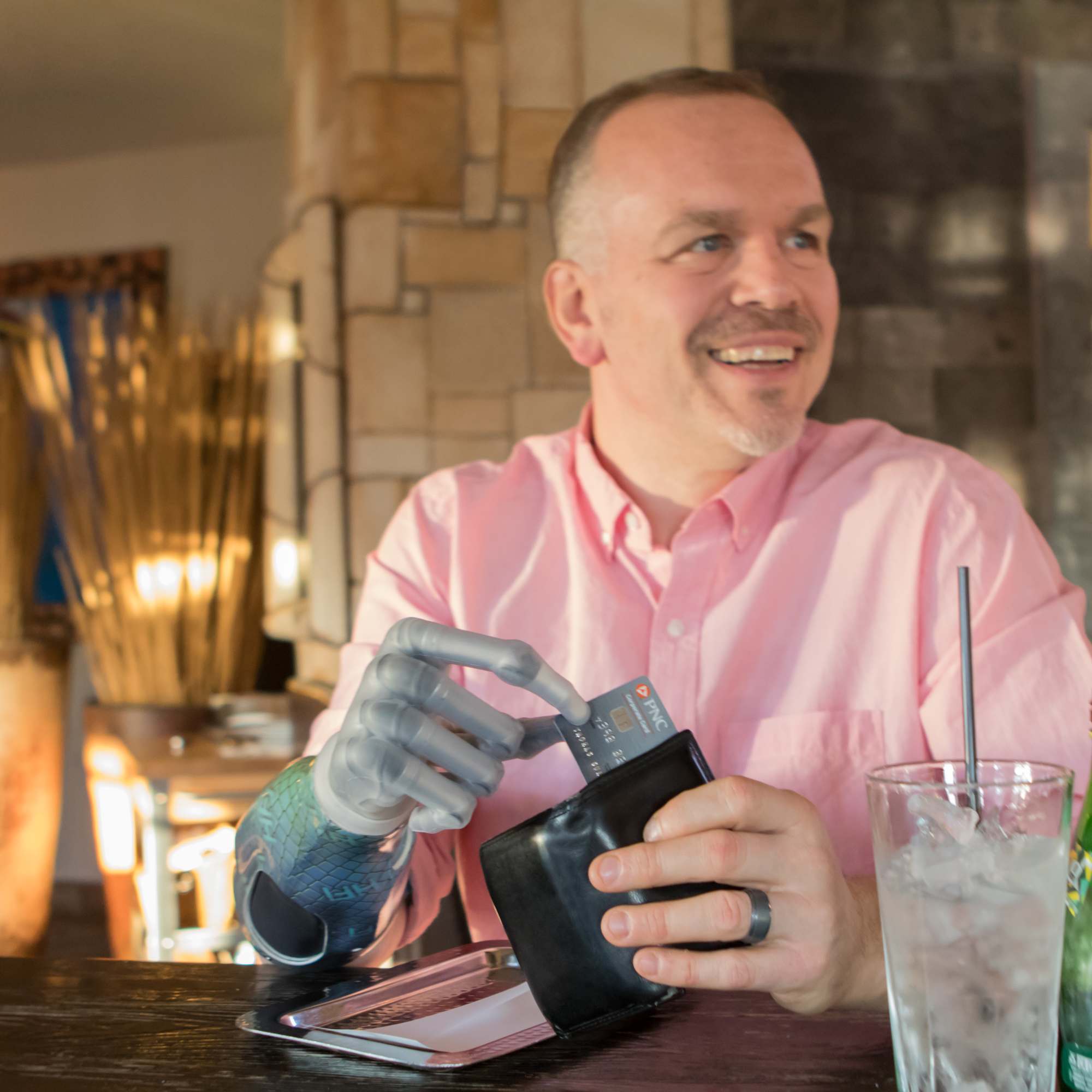Rehabilitation
Medical rehabilitation is the first important step back to an independent life. But what does that actually mean? “Rehabilitation is the totality of all medical, educational, professional and social measures that are required to create the best possible physical, mental and social conditions for the [user]. These should support him and enable him to find his place in society as independently and without outside help as possible. "( Source: World Health Organization, WHO )
After the amputation, the MDT will make decisions as to when and how the best time is for rehabilitation – a rehab programme. This programme will be individually tailored to each situation and goal. Rehabilitation after an amputation takes time, so it important for each individual to give themselves the time they need to recover adequately. The duration depends on various factors, such as the cause of the operation, age, and the self-motivation and active participation of the user also plays a significant role.
In the hospital
Post-operative rehabilitation starts in the hospital. Immediately after the operation, the wound healing and stump formation have top priority.
Wound healing
Initially, the residual limb will swell over a large area as a reaction to the operation. The swelling that is a normal response to the procedure is also known as oedema. Sometimes drainage is required to ensure that wound fluid and blood can drain away and the oedema can reduce. It is removed again during the healing process.
Scar mobilisation
This should only be started following consultation with the doctor to allow the sutured soft tissue to heal properly!
In most cases, the surgical wound closes within the first three to four weeks and a scar forms. The healing process of the scar can take a total of 6-12 months. In some cases, the scar tissue grows together with the soft tissue and the bone below. This can cause skin problems and pain when wearing a prosthesis. The following procedure will help to keep the skin and scar tissue supple and separated from each other. This can be a little painful, but it will help prevent future pain and skin problems when wearing the prosthesis. The following desensitisation exercises can also counteract phantom pain (sensation of pain in an amputated limb). The scar massage should be done with unscented creams or a special scar ointment. A soft and elastic scar makes it easier to wear a prosthesis.
Compression therapy in combination with a silicone pad is also possible to influence the scarring.
Exercise 1:
Place two fingers on a bony part of the stump and move them in a circle without moving the fingers on the surface of the skin. This will separate the skin from the tissue below. Repeat this process in all bony areas of the stump.
Exercise 2:
First of all, avoid the sewn areas and the unhealed scar tissue during the massage! Only when the scar has healed can this exercise be used to mobilise the scarred area. Try to do this three times a day for 15 to 20 minutes.
Compression therapy
If the wound is healing nicely and there are no complications, compression therapy can begin as soon as possible. The compression therapy protects the residual limb from external and internal forces, reduces the expansion of the oedema and shapes the residual limb. In addition, the pressure usually leads to a feeling of security and can have a pain-relieving effect. The aim is to further reduce the swelling of the residual limb and to promote blood circulation. In addition, it is about the shaping of the stump and the preparation for the prosthesis. Elastic bandages, compression stockings or silicone liners can be used here. The latter are also known as post-op liners. Elastic bandages are applied using a special wrapping technique after the wound or stump bandage has been removed. The compression bandage is often removed at the beginning. This ensures that the compression has not been wrapped too tightly or too loosely.
Positioning
The medically correct positioning of your residual limb is important to prevent muscle shortening and stiffening of the joints, to support blood circulation, to promote lymph drainage (oedema reduction) and to reduce pain. The nursing staff will make sure that the stump is correctly positioned, but in the long term it’s important to make sure that the stump is rested flat. In the case of an arm amputation, for example, the elbow should be stretched, as lying in bed with the elbow bent and lying on the chest can lead to a contracture (muscle shortening) of the joint
Physiotherapy / occupational therapy
After the procedure, the first physiotherapy exercises serve to mobilise you.
A team of therapists will be available to show techniques to move around in bed and how to do simple exercises that will prevent the joint from stiffening or losing motion. This phase is all about practicing the basic activities of daily living (ADLs). This includes all activities that have to do with food intake (independent eating) and personal hygiene (washing & getting dressed). The muscles and joints of the affected arm - for example the shoulder joint - have to be stretched so that you can regain maximum joint mobility.
The loss of a limb creates an imbalance and can lead to an asymmetrical posture. Strengthening exercises for the back muscles contribute to a balanced posture. A stable and balanced trunk makes it easier to control the prosthesis.
